South-east out of Staithes through Borrowby Dale to Hinderwell, then to Runswick Bay via Runswick Lane. Along the Cleveland Way / England Coast Path to Kettleness, before returning to Runswick Bay by way of the dismantled railway line. Finally back to Staithes on the Cleveland Way / England Coast Path. A 12-mile walk along the Yorkshire Coast.

Recommended Ordnance Survey Map
The best map to use on this walk is the Ordnance Survey map of the North York Moors Eastern Area, reference OS Explorer OL27, scale 1:25,000. It clearly displays footpaths, rights of way, open access land and vegetation on the ground, making it ideal for walking, running and hiking. The map can be purchased from Amazon in either a standard, paper version or a weatherproof, laminated version, as shown below.
Looking down upon Runswick Bay. The houses of Kettleness can just be seen on the cliff top on the left of the picture.

Runswick Bay
The steeply raked cottages of Runswick Bay look out over one of the finest bays in England.

The red-roofed houses are now much altered, but many were once lived in by herring fishermen and their families.
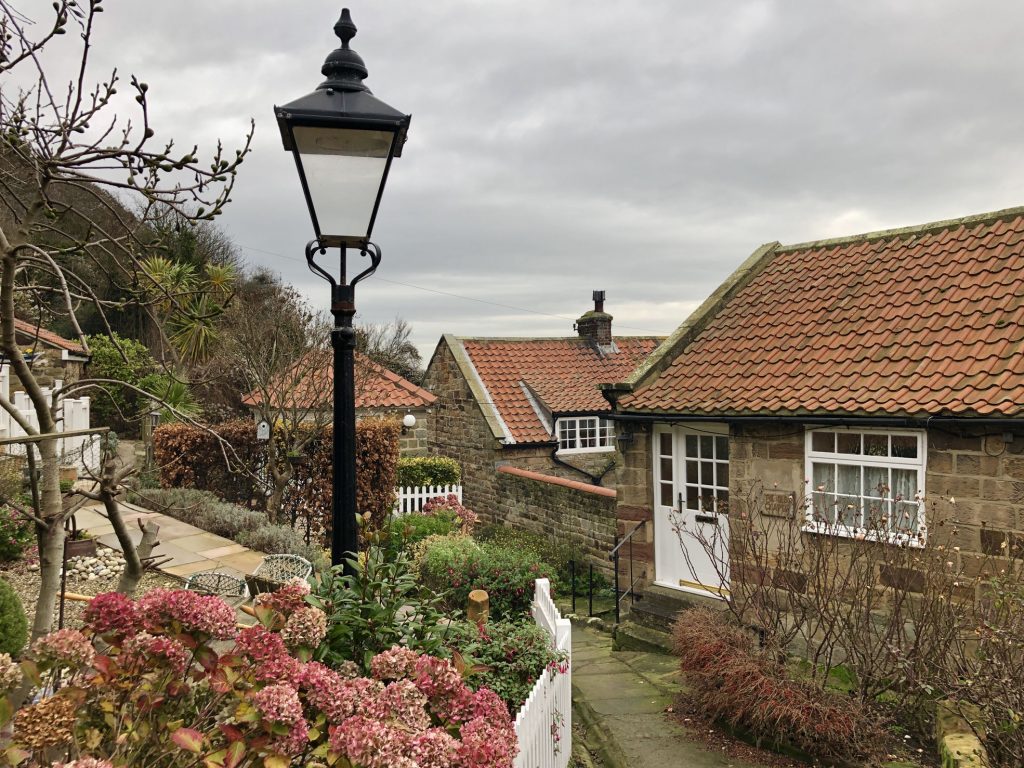
Villagers grew vegetables in the tiny gardens, stored fish in the herring houses and mended their nets by the slipway.
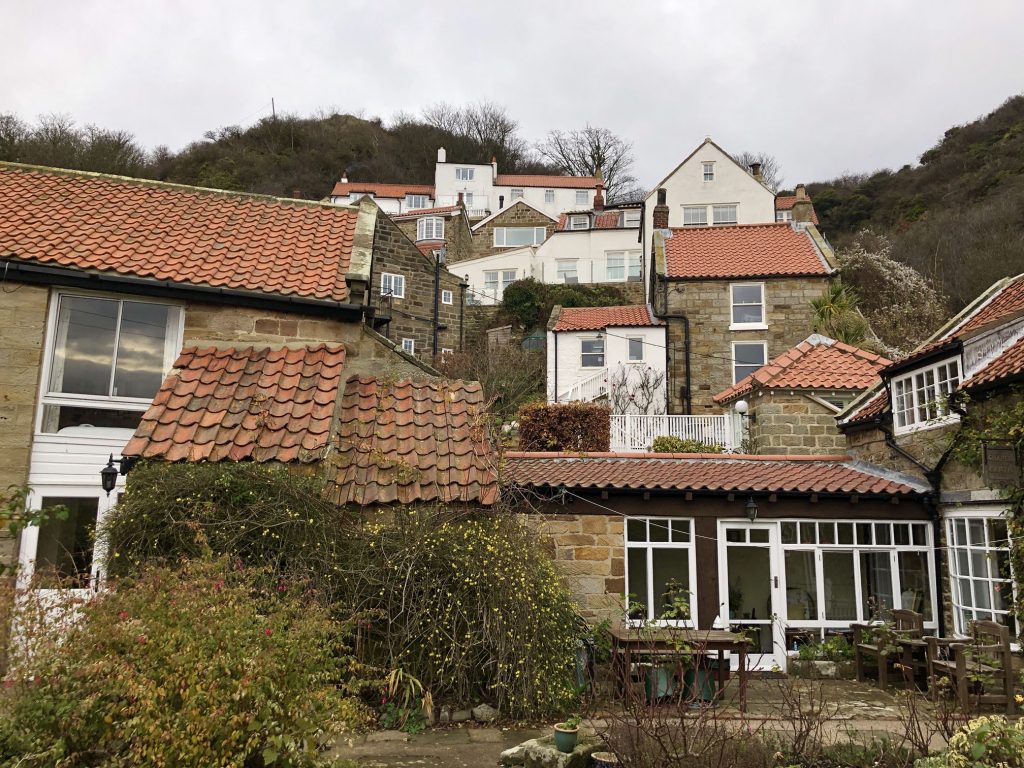
Runswick Bay is a charming place of tightly packed houses, pocket-sized gardens and surprise views.

Runswick Bay was originally sited a bit further north, but on one tragic night in 1664 after a ground-slip, the entire village fell into the sea.

The village was rebuilt after the ground-slip, but winter storms and heavy seas continued to take their toll. Sturdy sea walls and defensive boulder piles have been added in modern times to prevent further damage.
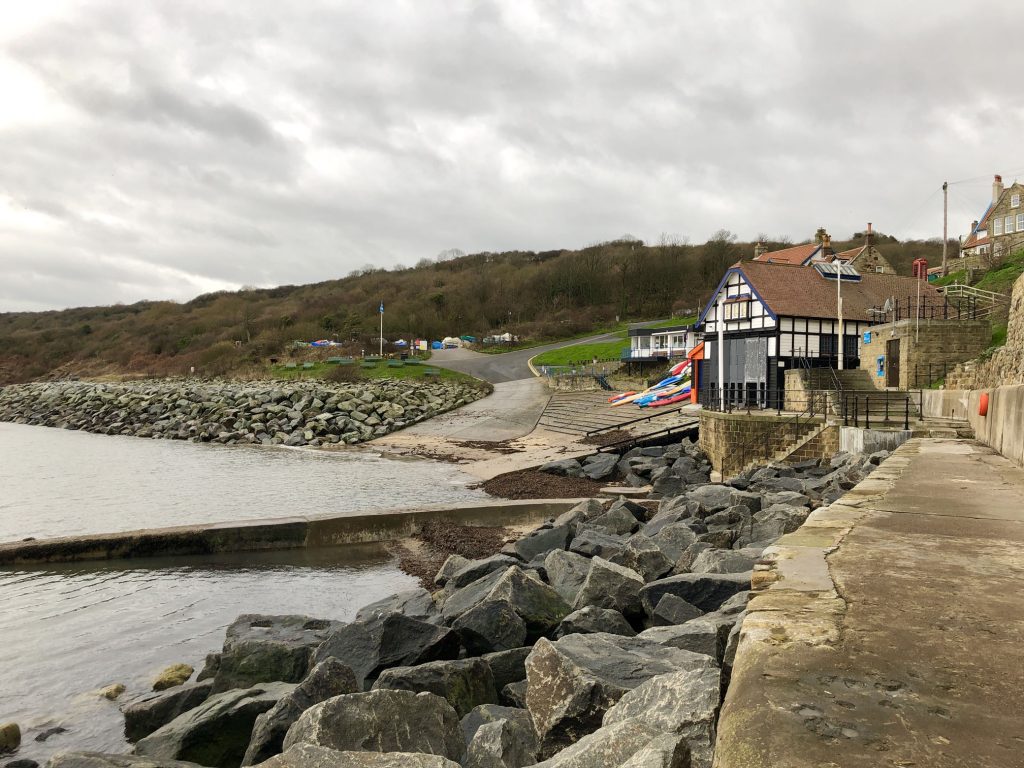
Twenty boats or more worked out of Runswick Bay in the 1840s, but a century later, the industry was gone.


Weathering and erosion of the cliff face is common along this coastline.

The coastal section of the Cleveland Way footpath between Saltburn and Filey is mainly on the cliff tops. At Runswick Bay the path runs along the beach for about half a mile before climbing up the right side of this gully at Hob Holes.
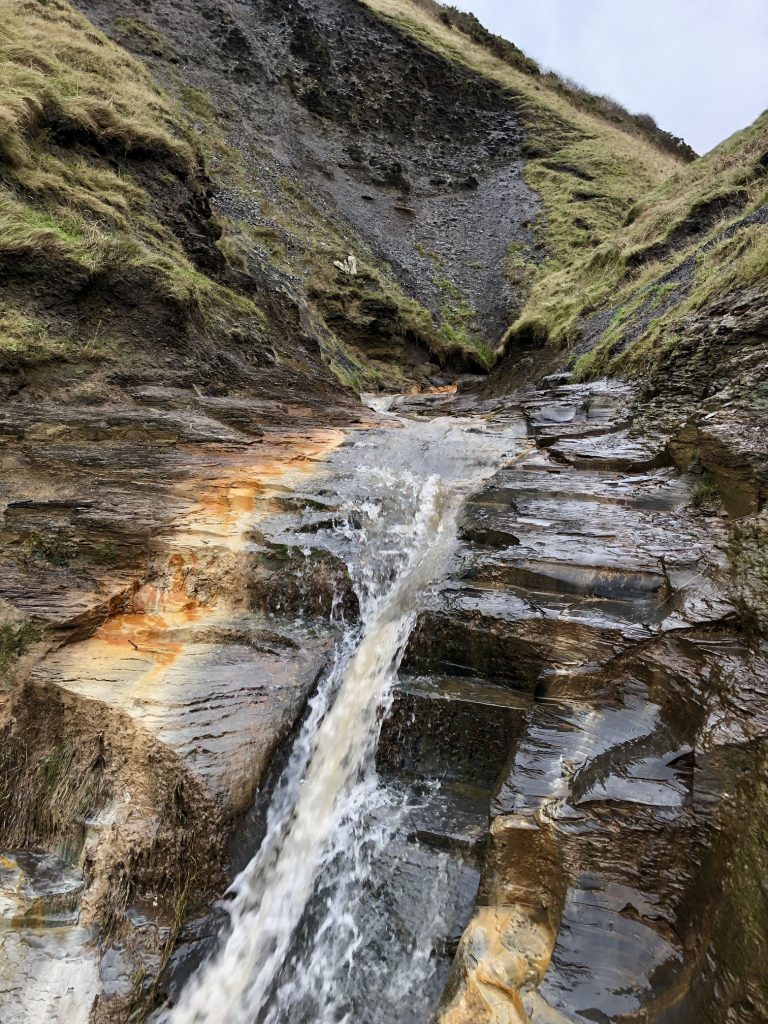
The view of Runswick Bay from the Cleveland Way / England Coast Path.

At the strangely sculpted headland of Kettleness Point, the hills, heaps and pits are a product of the alum industry which operated here from 1727 to 1871. Alum shale was extracted, burned and processed at Kettleness, with the resulting alum crystals used in the textile and tanning industries. Runswick Bay men worked with pick and shovel in the alum quarries, while flat-bottomed transport ships beached in the bay, bringing in fuel and other raw materials and taking away the valuable alum.

Kettleness railway station
Kettleness railway station is on the old Whitby, Redcar and Middlesbrough Union Railway. It was opened on 3 December 1883 and closed on 5 May 1958.

The station building is now known as ‘Seeonee Lair’ and is run as an activity centre by East Cleveland Scout District.
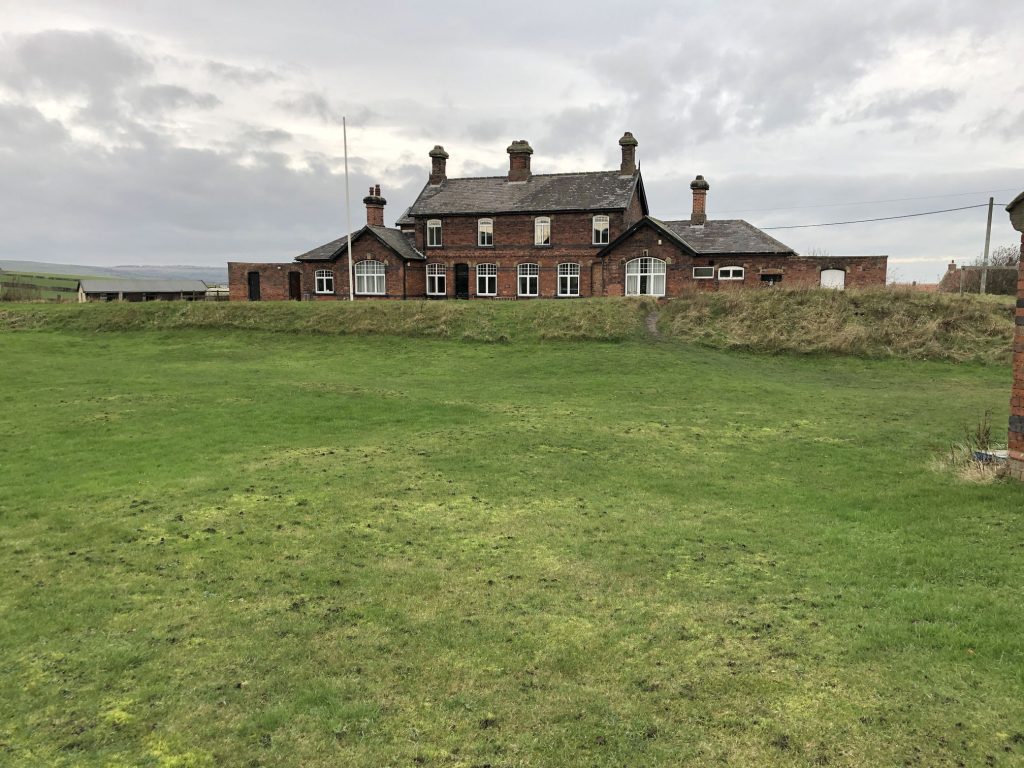
The track bed has been lifted and the station canopy removed, but the platforms remain.
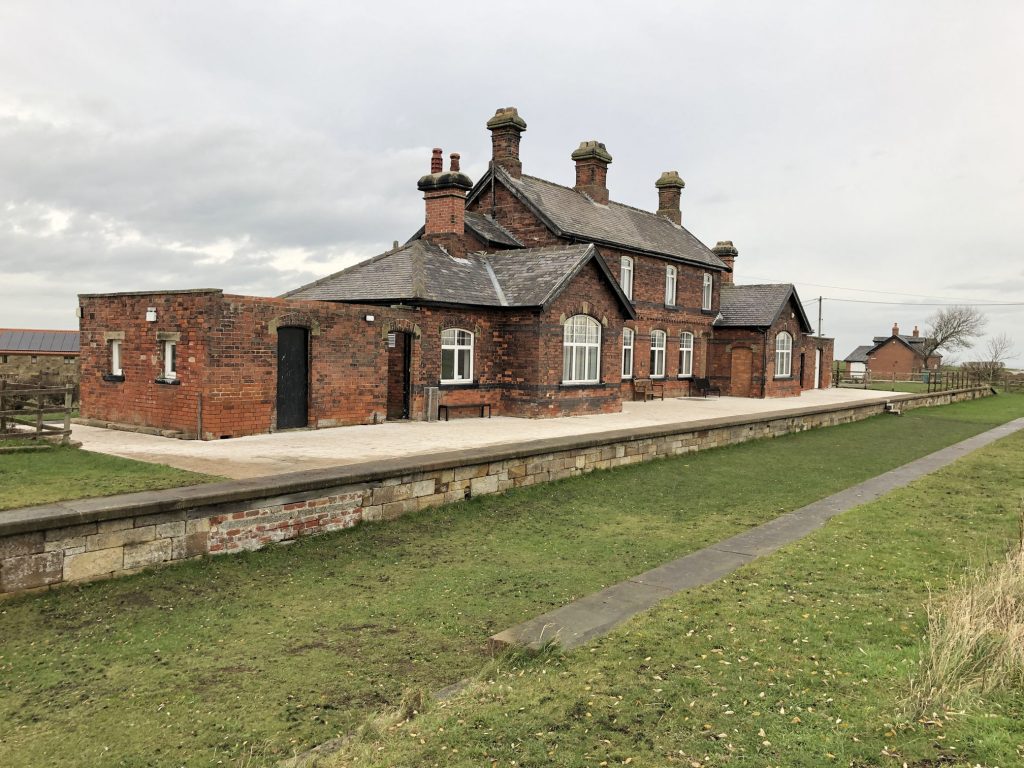
The view north-west towards Port Mulgrave.

Staithes and Staithes Harbour.
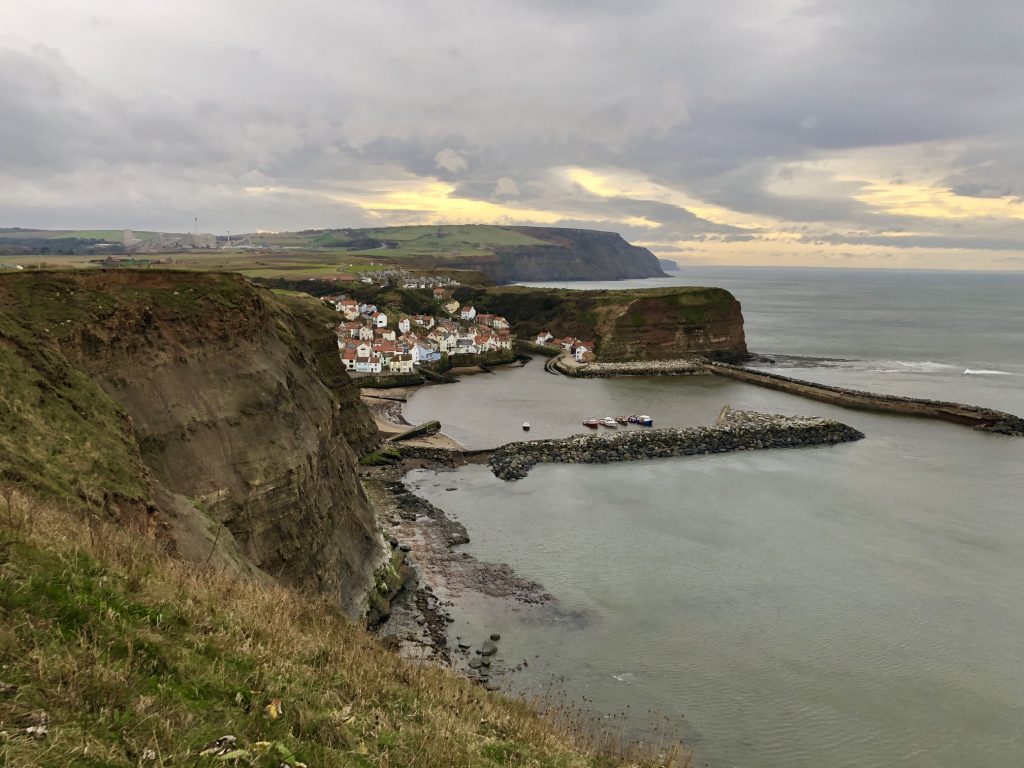
Staithes
Staithes means ‘landing place’ and this ancient village was once a thriving fishing port bustling with activity. In the early 1800s, Staithes was one of the largest fishing ports in England.

Local people depended on the sea for their livelihoods as fishermen, boat builders, sail makers and fish merchants. Cod, crab and lobsters are still caught today.

Smugglers frequented this coast and one shop had a secret room where smuggled goods were hidden.

The sea influenced daily life and locals often named houses after their boats (known as cobles) and painted them in the same bright colours.

Staithes is also famous for the traditional fisherwomen’s bonnet, still worn today on special occasions.
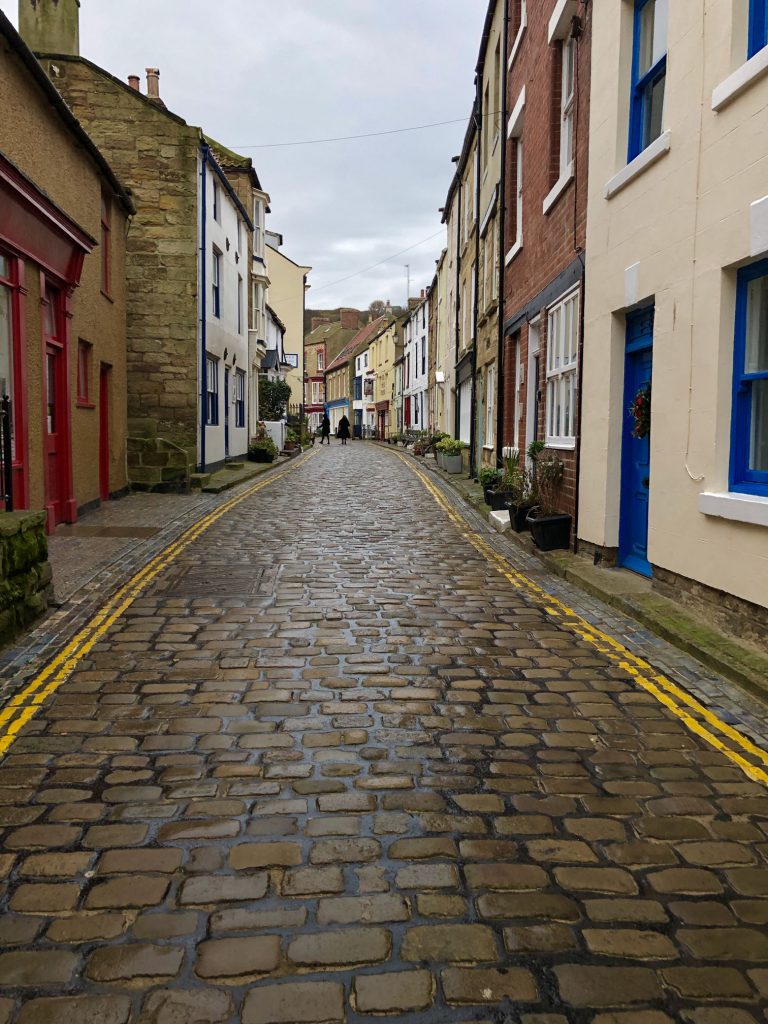
This spectacular location with its narrow cobbled streets, colourful cottages and atmospheric weather has inspired artists for over one hundred years.
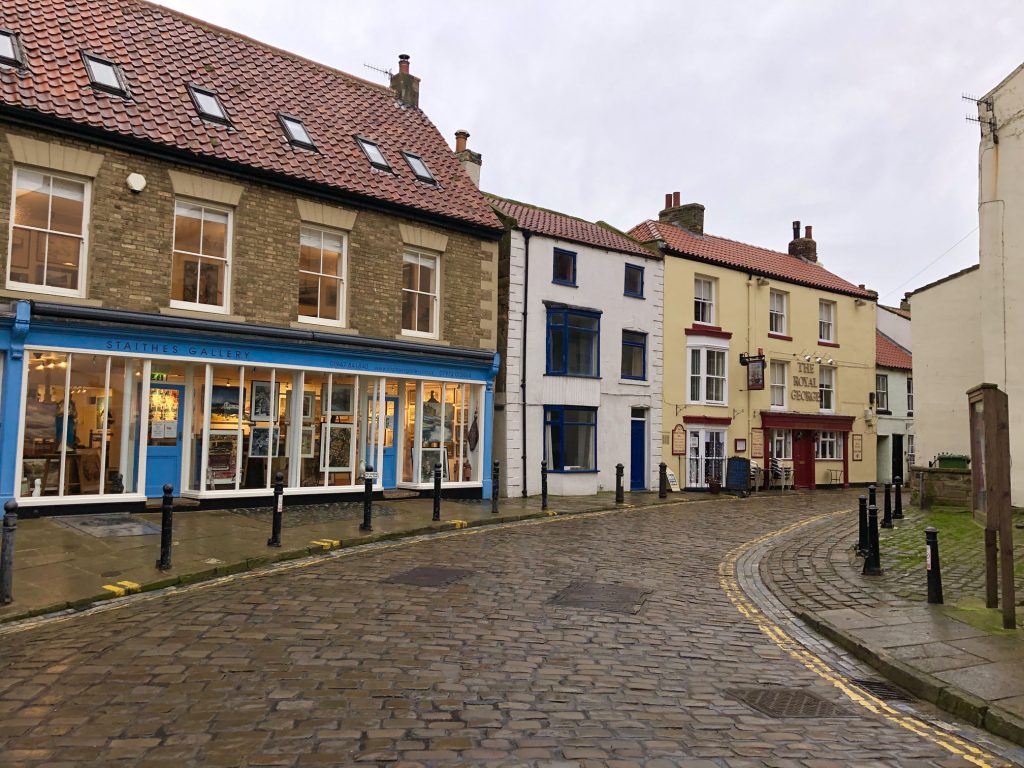
A group of artists became famous as ‘The Staithes Group’ and artists and photographers are often seen at work.
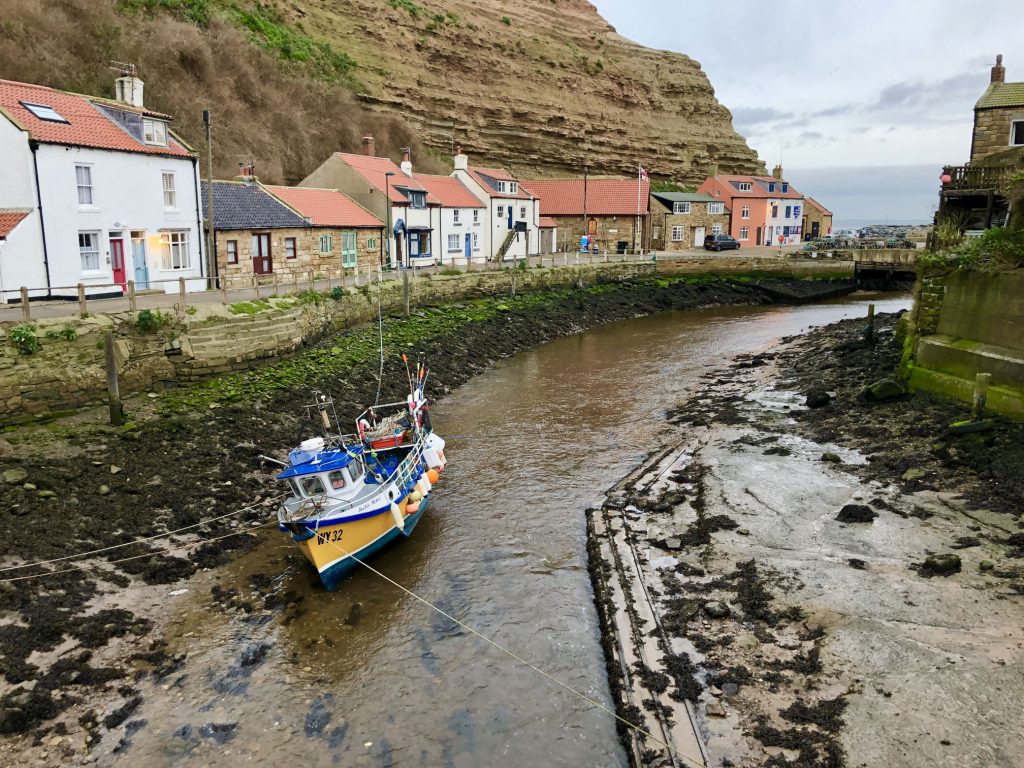
The coast also inspired Captain Cook’s great love of the sea and he spent his youth working in the general store. The shop slipped into the sea many years ago but salvaged parts were used to build the current ‘Captain Cook’s Cottage’.
